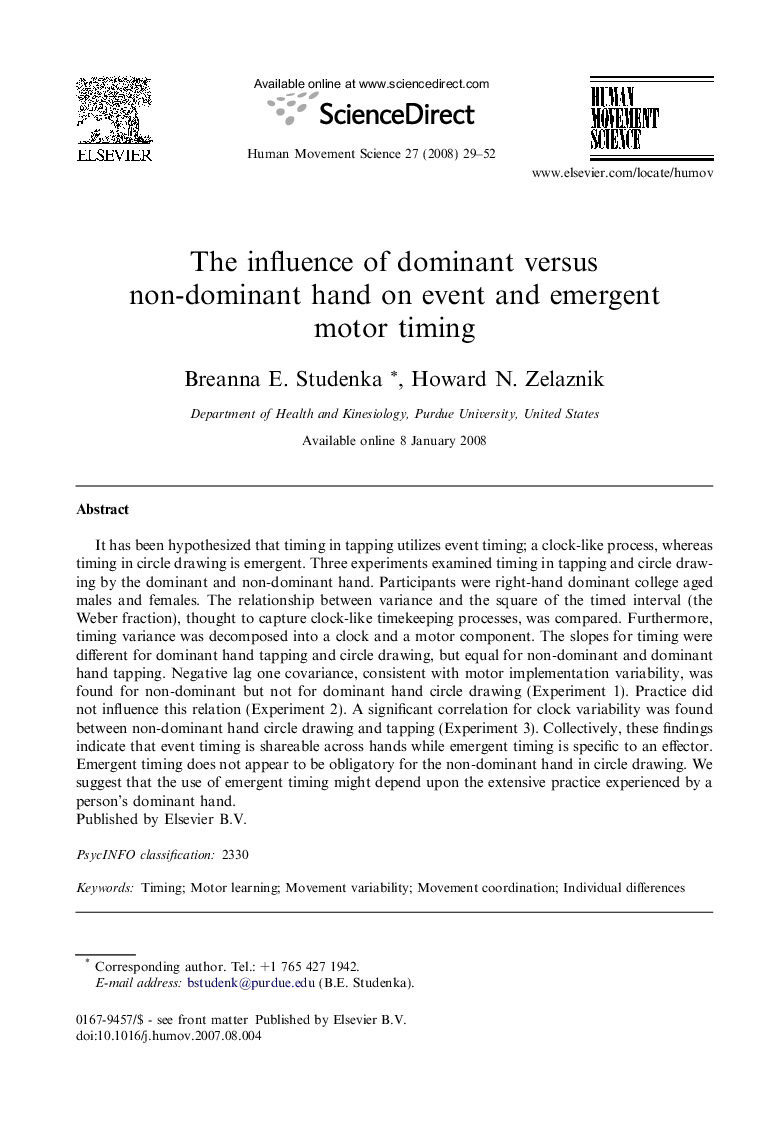| Article ID | Journal | Published Year | Pages | File Type |
|---|---|---|---|---|
| 928620 | Human Movement Science | 2008 | 24 Pages |
It has been hypothesized that timing in tapping utilizes event timing; a clock-like process, whereas timing in circle drawing is emergent. Three experiments examined timing in tapping and circle drawing by the dominant and non-dominant hand. Participants were right-hand dominant college aged males and females. The relationship between variance and the square of the timed interval (the Weber fraction), thought to capture clock-like timekeeping processes, was compared. Furthermore, timing variance was decomposed into a clock and a motor component. The slopes for timing were different for dominant hand tapping and circle drawing, but equal for non-dominant and dominant hand tapping. Negative lag one covariance, consistent with motor implementation variability, was found for non-dominant but not for dominant hand circle drawing (Experiment 1). Practice did not influence this relation (Experiment 2). A significant correlation for clock variability was found between non-dominant hand circle drawing and tapping (Experiment 3). Collectively, these findings indicate that event timing is shareable across hands while emergent timing is specific to an effector. Emergent timing does not appear to be obligatory for the non-dominant hand in circle drawing. We suggest that the use of emergent timing might depend upon the extensive practice experienced by a person’s dominant hand.
